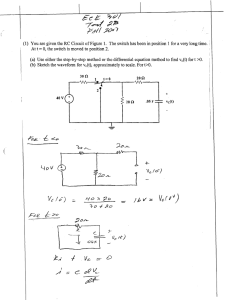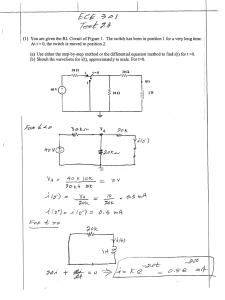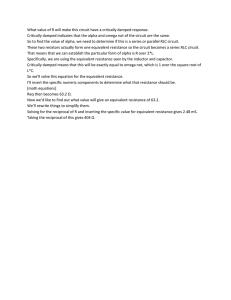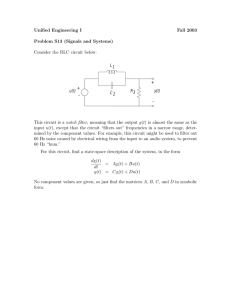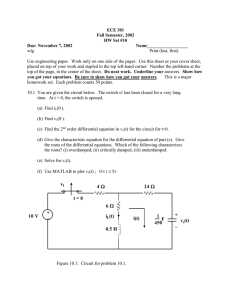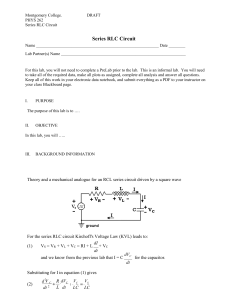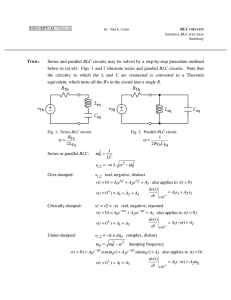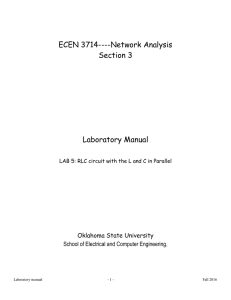EE 210 Name_______________ Hour Exam 3 November 26, 2013
advertisement
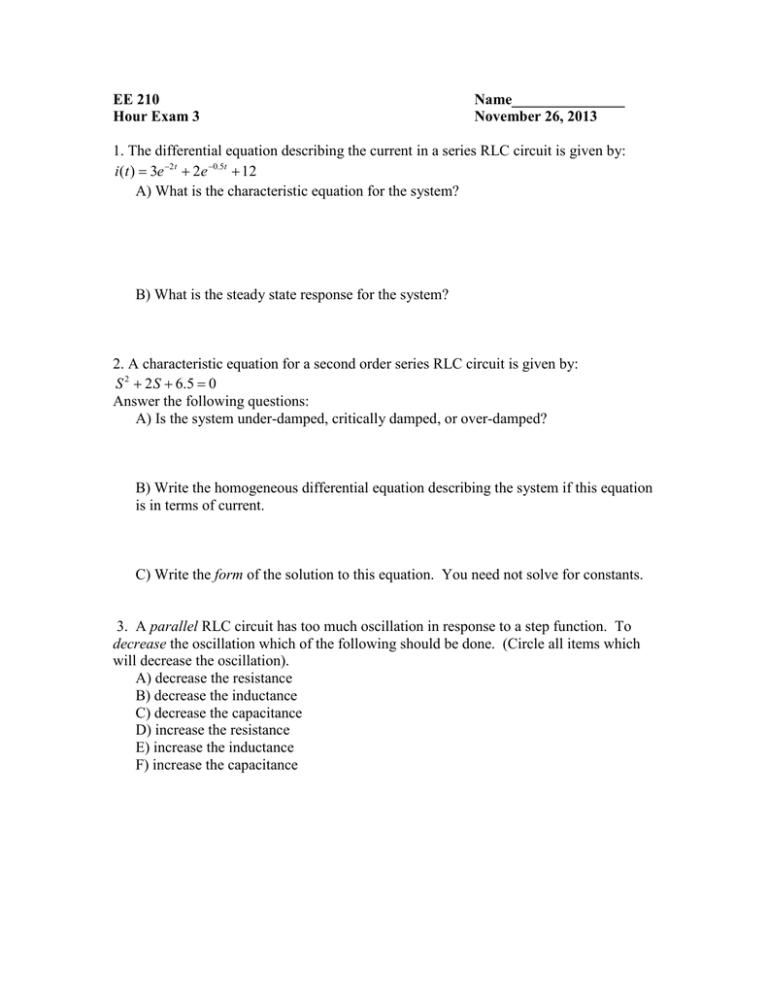
EE 210 Hour Exam 3 Name_______________ November 26, 2013 1. The differential equation describing the current in a series RLC circuit is given by: i (t ) = 3e −2 t + 2e −0.5t + 12 A) What is the characteristic equation for the system? B) What is the steady state response for the system? 2. A characteristic equation for a second order series RLC circuit is given by: S 2 + 2 S + 6.5 = 0 Answer the following questions: A) Is the system under-damped, critically damped, or over-damped? B) Write the homogeneous differential equation describing the system if this equation is in terms of current. C) Write the form of the solution to this equation. You need not solve for constants. 3. A parallel RLC circuit has too much oscillation in response to a step function. To decrease the oscillation which of the following should be done. (Circle all items which will decrease the oscillation). A) decrease the resistance B) decrease the inductance C) decrease the capacitance D) increase the resistance E) increase the inductance F) increase the capacitance 4. Answer the questions below about the RL circuit shown. A) Write (but do not solve) the differential equation for VL for the circuit below. Your equations should contain only VL and Vg as variables. Vg is not necessarily a constant. B) If Vg = 12u(t), find the equation for VL for t > 0. 5. Answer the questions listed for the circuit below. A) Find v1 at t = 0+ B) Find v2 at t = 0+ C) Find the value of the current, i, at t = 0+. 6. For the circuit shown answer the following questions. Show all work. A) What is the value of iL at 0+ B) What is the value of iL at ∞. C) Find the equation for iL for all t > 0. 7. In the circuit below answer the following questions. In each case show all of your work for full credit. A) Write (but do not solve) the differential equation for the current v(t). B) What are the values of i(t) and v(t) at t = 0+ and at t = ∞. i(0+) = _________ v(0+) = ___________ i(∞) = ___________ v(∞) = ___________ C) Is the system underdamped, critically damped, or overdamped. Justify your answer. D) What is the form of the equation for the total solution for v(t)?

